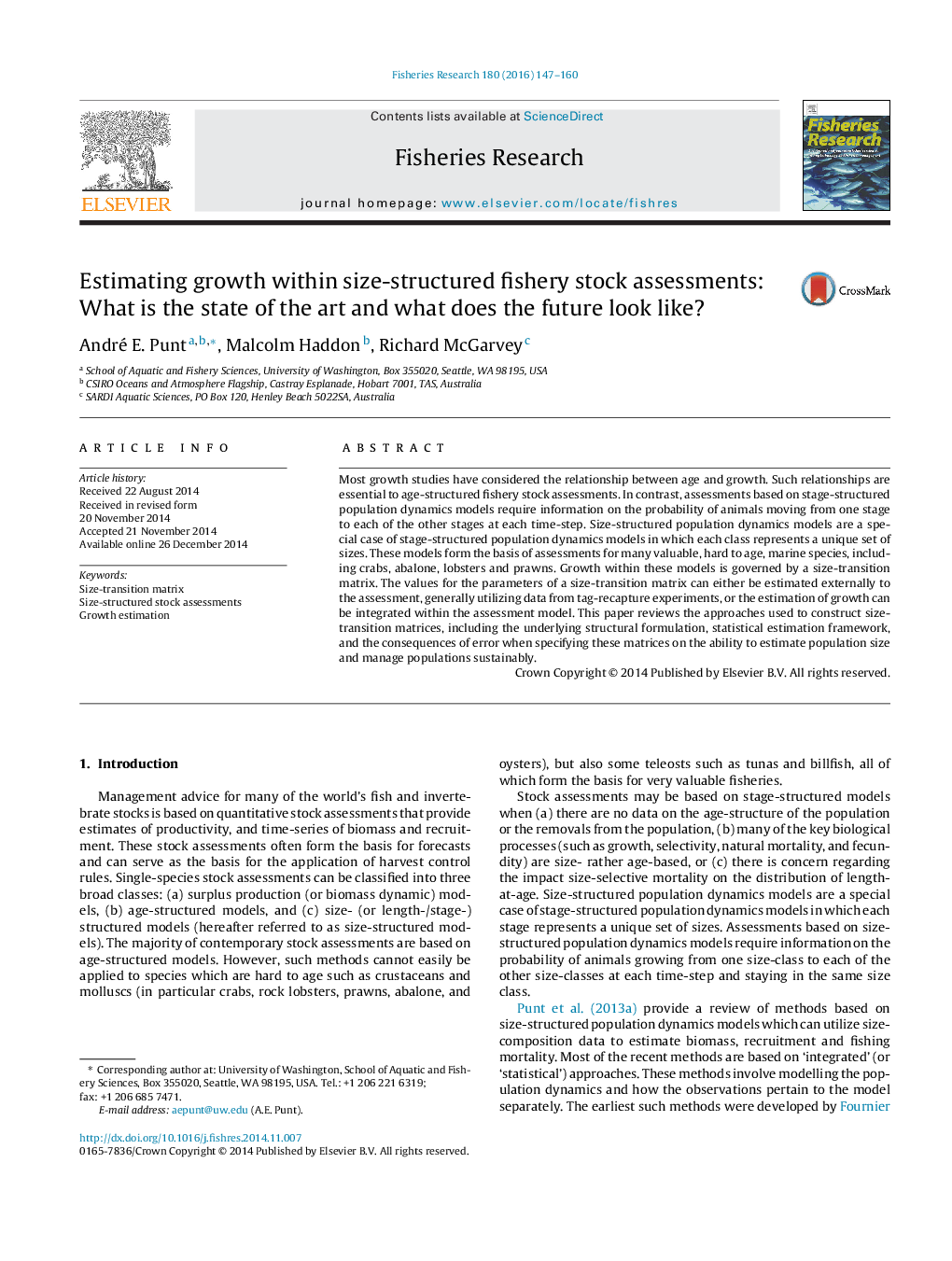| Article ID | Journal | Published Year | Pages | File Type |
|---|---|---|---|---|
| 4542726 | Fisheries Research | 2016 | 14 Pages |
•Invertebrates cannot routinely be aged, so size-based assessment methods are needed.•Methods have been developed to estimate the elements of the size-transition matrices.•Growth transition estimation can be integrated into the stock assessment models.•Subjects requiring further development in size-structured models are identified.
Most growth studies have considered the relationship between age and growth. Such relationships are essential to age-structured fishery stock assessments. In contrast, assessments based on stage-structured population dynamics models require information on the probability of animals moving from one stage to each of the other stages at each time-step. Size-structured population dynamics models are a special case of stage-structured population dynamics models in which each class represents a unique set of sizes. These models form the basis of assessments for many valuable, hard to age, marine species, including crabs, abalone, lobsters and prawns. Growth within these models is governed by a size-transition matrix. The values for the parameters of a size-transition matrix can either be estimated externally to the assessment, generally utilizing data from tag-recapture experiments, or the estimation of growth can be integrated within the assessment model. This paper reviews the approaches used to construct size-transition matrices, including the underlying structural formulation, statistical estimation framework, and the consequences of error when specifying these matrices on the ability to estimate population size and manage populations sustainably.
